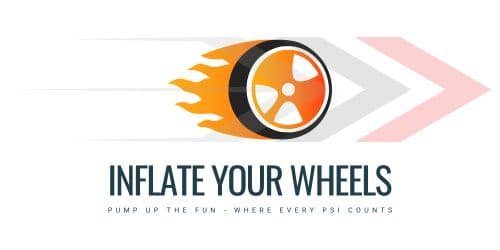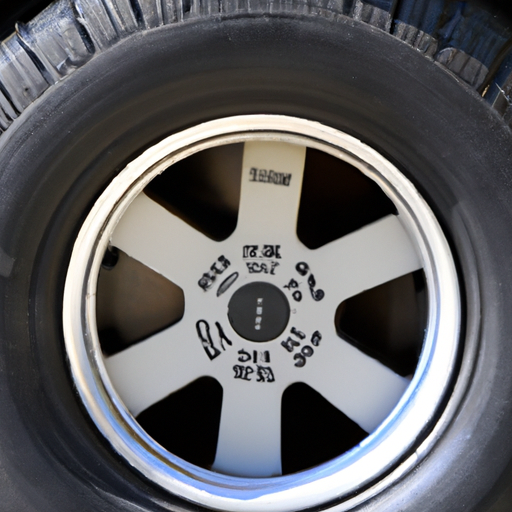We’ve all been there – that dreaded moment when you glance at your car’s dashboard and see the tire pressure warning light staring back at you. Suddenly, you find yourself asking the question, “How long should I wait to put air in my tires?” It’s a common concern and one that can affect not only the performance of your vehicle but also your safety on the road.
In this article, we’ll explore the importance of proper tire inflation and provide some helpful guidelines on when and how often you should check and fill your tires with air. So let’s get rolling and find out the answer to this pressing question!
How Long Should I Wait To Put Air In My Tires?
Table of Contents

Factors Affecting Tire Pressure
Temperature
The temperature is one of the most significant factors affecting tire pressure. As the temperature changes, so does the air inside the tires. When the ambient temperature drops, the air molecules inside the tire contract, leading to a decrease in tire pressure. On the other hand, when the temperature rises, the air molecules expand, causing the tire pressure to increase. Therefore, it is essential to consider the temperature when monitoring and adjusting tire pressure.
Tire Type
Different types of tires have varying pressure requirements. The type of tire, whether it be a passenger, performance, or off-road tire, can affect the recommended tire pressure. Manufacturers provide specific guidelines for each tire type, taking into account their individual characteristics and intended use. It is crucial to adhere to the recommended tire pressure for your specific tire type to ensure optimal performance and safety.
Load
The weight carried by the vehicle can influence tire pressure. As the load increases, the tires must support a greater weight, resulting in higher tire pressure requirements. Conversely, when the load decreases, such as when unloading items from the vehicle, the tire pressure needs to be adjusted accordingly. Failing to maintain the proper tire pressure based on the load can lead to reduced tire performance and potential safety hazards.
Driving Conditions
The driving conditions can have a significant impact on tire pressure. Factors such as rough roads, potholes, and uneven surfaces can cause tire pressure to decrease due to air leakage or punctures. Additionally, driving at high speeds can generate heat, causing the air inside the tires to expand and raise the tire pressure. It is essential to regularly monitor tire pressure, especially after driving in challenging conditions, to ensure optimal performance and prevent any potential damage or accidents.
Time Since Last Inflation
Over time, natural air leakage can occur, causing tire pressure to decrease. Additionally, changes in temperature and driving conditions can also affect tire pressure. It is advisable to check the tire pressure regularly and inflate them as needed to maintain the recommended level. Neglecting to do so can lead to suboptimal tire performance, increased risk of accidents, and reduced fuel efficiency.
Recommended Tire Pressure
Manufacturer’s Specifications
The manufacturer of your vehicle sets specific tire pressure recommendations based on extensive testing and analysis. These specifications take into account various factors, such as the weight distribution, suspension, and handling characteristics of the vehicle. It is important to follow the manufacturer’s guidelines to ensure the tires function optimally and to avoid any safety concerns.
Vehicle’s Owner’s Manual
The owner’s manual provides valuable information regarding tire pressure. It serves as a comprehensive guide to maintaining your vehicle, including important details about tire pressure recommendations. The manual provides specific instructions based on the make and model of your vehicle, ensuring the tire pressure is appropriate for your particular vehicle.
Tire Sidewall Marking
Tire sidewalls contain important information, including the maximum tire pressure the tire can handle. This marking ensures that the tire is not overinflated beyond its capacity, reducing the risk of blowouts. While the maximum tire pressure indicated on the sidewall is not the recommended pressure, it is crucial to avoid exceeding this limit to maintain tire safety.
Signs of Low Tire Pressure
TPMS Warning Light
Most modern vehicles are equipped with a Tire Pressure Monitoring System (TPMS) that detects and alerts the driver when the tire pressure is below the recommended level. The TPMS warning light, usually located on the dashboard, illuminates when one or more tires are significantly underinflated. Paying attention to this warning light and taking prompt action to address the low tire pressure is vital to ensure safety and prevent potential tire-related issues.
Decreased Fuel Efficiency
Low tire pressure can negatively impact fuel efficiency. Underinflated tires create additional resistance, forcing the engine to work harder to propel the vehicle forward. This increased effort results in higher fuel consumption. By maintaining the proper tire pressure, fuel efficiency can be optimized, leading to potential cost savings and reduced environmental impact.
Uneven Tire Wear
Insufficient tire pressure can lead to uneven wear patterns on the tires. When the tire is not properly inflated, certain areas of the tire experience more friction, causing them to wear out faster than others. This can result in a shorter tire lifespan and the need for premature replacement. Regularly monitoring and maintaining the recommended tire pressure helps to ensure even tire wear, prolonging the life of the tires and optimizing performance.
Poor Handling and Braking
Low tire pressure affects the overall handling and braking capabilities of a vehicle. Underinflated tires reduce the responsiveness and stability of the vehicle, making it more difficult to control, especially in emergency situations. Proper tire pressure allows for optimal traction, ensuring improved handling and shorter braking distances, enhancing both safety and maneuverability on the road.
Increased Risk of Blowouts
One of the most severe consequences of low tire pressure is an increased risk of tire blowouts. Underinflated tires experience more stress and heat buildup, making them more susceptible to sudden failure. Blowouts can result in loss of control over the vehicle, potentially leading to accidents, injuries, or even fatalities. Regularly checking tire pressure and maintaining it at the recommended level significantly reduces the risk of dangerous blowouts and promotes safer driving conditions.
Frequency of Tire Pressure Checks
Regular Monthly Inspection
Performing a monthly tire pressure check is a good practice to ensure consistent and safe driving. By incorporating this into your routine maintenance, you can catch any gradual pressure loss and address it promptly. This habit can contribute to optimal tire performance and minimize the risk of unexpected tire-related issues.
Before Long Trips
Before embarking on a long trip, it is essential to check the tire pressure to ensure a smooth and safe journey. Long drives can expose the tires to various conditions and temperatures, making them more susceptible to pressure fluctuations. By ensuring the tires are properly inflated before starting a long trip, you can minimize the risk of potential issues and enjoy a worry-free travel experience.
After Significant Temperature Changes
Significant temperature changes, such as transitioning from winter to summer or vice versa, can cause noticeable fluctuations in tire pressure. It is important to monitor tire pressure during these seasonal shifts and adjust it accordingly to maintain optimal performance. Adapting to the changing weather conditions ensures that the tires are capable of providing the necessary traction and grip for safe driving.
Following a Puncture or Tire Repair
After repairing a punctured tire or replacing it, it is crucial to check the tire pressure. Tire repairs or replacements can sometimes lead to pressure changes, necessitating adjustments to achieve the recommended level. Verifying the tire pressure ensures that the tire is ready for use and helps maintain consistent performance.
At Least Once Every Three Months
As a general rule of thumb, tire pressure should be checked at least once every three months, regardless of driving patterns. This regular inspection provides an opportunity to catch any gradual pressure loss and address it promptly. Consistently monitoring tire pressure and restoring it to the recommended level helps to optimize performance, extend tire life, and promote safety on the road.
Ideal Time for Tire Inflation
When Tires Are Cool
To obtain accurate tire pressure readings, it is best to check and adjust tire pressure when the tires are cool. Heat generated during driving can increase tire pressure, potentially leading to inflated readings. When the tires are cool, such as in the morning before driving, the readings are more reliable and reflective of the actual pressure.
Before Driving the Vehicle
Inflating the tires before driving the vehicle is recommended to ensure the accuracy of tire pressure measurements. This practice minimizes the influence of factors such as ambient temperature and driving heat, providing a more accurate baseline for monitoring tire pressure. Inflating the tires before driving also ensures that they are ready for optimal performance and safety on the road.
When Ambient Temperature Is Stable
Choosing a time when the ambient temperature is stable is preferable for tire inflation. Fluctuating temperature conditions can affect the tire pressure, leading to inaccurate readings. Inflating the tires when the ambient temperature is stable helps to ensure consistent and reliable measurements, promoting the safe and efficient operation of the vehicle.
Importance of Proper Tire Pressure
Optimal Fuel Efficiency
Maintaining the recommended tire pressure helps optimize fuel efficiency. When the tires are properly inflated, the rolling resistance is minimized, allowing the vehicle to move more efficiently. This reduced resistance requires less power from the engine, resulting in improved fuel economy. By consistently monitoring and adjusting tire pressure, drivers can maximize their fuel efficiency, helping both their wallets and the environment.
Improved Handling and Braking
Proper tire pressure is crucial for optimal handling and braking performance. When the tires are inflated to the appropriate level, they provide the desired contact patch with the road, ensuring better traction and grip. This enhanced traction allows for improved control during cornering, maneuvering, and emergency braking, contributing to overall safety and a more enjoyable driving experience.
Enhanced Tire Lifespan
Maintaining the recommended tire pressure can significantly extend the lifespan of the tires. When they are properly inflated, the tires wear evenly, preventing premature wear on specific areas. By avoiding uneven wear, drivers can maximize the mileage they get out of their tires, reducing the frequency of replacements and saving money in the long run.
Reduced Risk of Accidents
Proper tire pressure is essential for maintaining optimal vehicle safety. Adequate tire pressure ensures better handling, stability, and control over the vehicle, reducing the risk of accidents. With the right amount of traction and grip, drivers can respond more effectively to unexpected or hazardous situations, increasing the overall safety for both themselves and other road users.
Better Performance in Extreme Conditions
Proper tire pressure is especially important in extreme weather conditions, such as heavy rain, snow, or icy roads. Adequate tire pressure ensures that the tires can maintain optimal grip and traction, even in challenging situations. This increased traction allows for better responsiveness and control, enhancing safety and reducing the likelihood of accidents.
Effects of Overinflating Tires
Uneven Tire Wear
Overinflating tires can lead to uneven tire wear. When the tire pressure is too high, the central section of the tire bears most of the weight, causing accelerated wear in the center. This results in a narrower contact patch with the road, negatively impacting traction and handling. Over time, uneven tire wear can lead to decreased performance and the need for premature tire replacement.
Reduced Traction
Overinflated tires can lead to reduced traction, especially on wet or slippery surfaces. When the tire pressure is excessive, the center of the tire becomes more rigid, reducing the contact area with the road. This reduced contact patch reduces the tire’s ability to grip the surface effectively. Reduced traction can compromise vehicle control, increasing the risk of accidents.
Uncomfortable Ride
Higher tire pressure can result in an uncomfortable ride. Overinflated tires have a reduced ability to absorb shocks and vibrations from the road, reducing ride comfort. The increased rigidity can make the vehicle more susceptible to bumps and road imperfections, resulting in a rougher and less pleasant driving experience.
Increased Risk of Tire Blowouts
Overinflated tires are at an increased risk of blowouts. The excess pressure places undue stress on the tire structure, making it more prone to failure. Blowouts can occur suddenly and without warning, leading to loss of control over the vehicle and potentially dangerous situations. Adhering to the recommended tire pressure minimizes the risk of blowouts and promotes a safer driving environment.
Effects of Underinflating Tires
Uneven Tire Wear
Underinflated tires are susceptible to uneven tire wear. When the tire pressure is too low, the outer edges of the tire bear most of the weight, causing accelerated wear on the shoulders. The increased friction can also generate heat, further contributing to premature tire wear. Uneven tire wear decreases tire performance and longevity, necessitating replacement sooner than expected.
Increased Rolling Resistance
Underinflated tires lead to increased rolling resistance. When the tire pressure is insufficient, the tire’s sidewalls flex excessively, creating additional friction with the road surface. This extra resistance requires the engine to exert more effort, resulting in higher fuel consumption. Maintaining the proper tire pressure reduces rolling resistance, maximizing fuel efficiency and lowering operating costs.
Reduced Fuel Efficiency
Underinflated tires can significantly impact fuel efficiency. The increased rolling resistance requires the engine to work harder, consuming more fuel to propel the vehicle. This reduced fuel efficiency not only has economic implications but also contributes to greater environmental pollution. Regularly monitoring and adjusting tire pressure to the recommended level helps optimize fuel efficiency, benefiting both the driver and the planet.
Poor Handling and Braking
Underinflated tires compromise the handling and braking capabilities of a vehicle. Insufficient tire pressure reduces the tire’s ability to maintain adequate traction and grip, particularly in cornering and emergency braking scenarios. This reduced control can lead to longer stopping distances, less accurate steering response, and an overall decrease in vehicle safety. By maintaining proper tire pressure, drivers can ensure optimal handling and braking performance.
Higher Risk of Tire Damage
Underinflated tires are at a higher risk of damage, especially when encountering obstacles or driving on rough roads. The decreased tire pressure makes the sidewalls more vulnerable to impacts, cuts, and punctures. Damaged tires not only pose a safety risk but also require immediate attention and potential replacement. By keeping the tires properly inflated, drivers can minimize the risk of tire damage and the associated costs and inconveniences.
Proper Tire Inflation Tips
Use a Reliable Tire Pressure Gauge
Using a reliable tire pressure gauge is crucial for accurately measuring the tire pressure. There are various types of gauges available, including analog, digital, and built-in gauges. Selecting a gauge that is easy to use and provides accurate readings ensures that the tire pressure is correctly assessed and adjusted as needed.

Refer to Recommended Pressure
Always refer to the recommended tire pressure specified by the manufacturer. This information can be found in the vehicle’s owner’s manual, on the sticker inside the driver’s door jamb, or on the vehicle’s sidewall. By following the manufacturer’s guidelines, drivers can ensure that the tire pressure is optimized for the vehicle, promoting safety, performance, and longevity.
Inflate Tires Evenly
When inflating the tires, it is essential to ensure even pressure distribution across all tires. Uneven pressure can lead to imbalanced vehicle handling and uneven tire wear. Use the gauge to monitor and adjust the pressure in each tire, being mindful of maintaining consistency among all four tires. This balanced inflation helps to optimize vehicle performance and prevent premature tire damage.
Check Pressure When Tires Are Cold
To obtain accurate tire pressure readings, it is important to check the tire pressure when the tires are cold. The heat generated during driving can increase tire pressure, potentially leading to inflated readings. To ensure accurate measurements, check the tire pressure before driving, or wait for at least three hours after the vehicle has been parked.
Monitor Tire Pressure Regularly
Regularly monitoring tire pressure is essential for maintaining optimal performance and safety. Develop a routine of checking tire pressure monthly and before long trips, and following any significant temperature changes. Additionally, be proactive in checking tire pressure after a puncture or tire repair. Regular monitoring ensures that the tires are properly inflated, reducing the risk of tire-related issues and promoting safer driving conditions.
Conclusion
Proper tire pressure is essential for optimal performance, safety, and longevity of your vehicle’s tires. Factors such as temperature, tire type, load, and driving conditions can influence tire pressure. It is recommended to follow the manufacturer’s specifications, consult the vehicle’s owner’s manual, and take note of tire sidewall markings when determining the appropriate tire pressure.
Low tire pressure can be identified through the TPMS warning light, decreased fuel efficiency, uneven tire wear, poor handling and braking, and an increased risk of blowouts. It is crucial to check tire pressure regularly, ideally on a monthly basis, before long trips, after temperature changes, punctures, or tire repairs, and at least once every three months.
Ideal tire inflation should occur when the tires are cool, before driving the vehicle, and when the ambient temperature is stable. Proper tire pressure ensures optimal fuel efficiency, improved handling and braking, enhanced tire lifespan, reduced risk of accidents, and better performance in extreme conditions.
Overinflating tires can result in uneven tire wear, reduced traction, an uncomfortable ride, and an increased risk of tire blowouts. On the other hand, underinflating tires leads to uneven tire wear, increased rolling resistance, reduced fuel efficiency, poor handling and braking, and a higher risk of tire damage.
To maintain proper tire inflation, use a reliable tire pressure gauge, refer to the recommended pressure, inflate tires evenly, check pressure when tires are cold, and monitor tire pressure regularly. By adhering to these practices, you can ensure your tires are always at the optimal pressure, promoting safety, fuel efficiency, and longevity of your tires.

Keep your car tires in peak condition with the right inflator.
Discovering the best tire inflator can be a game-changer for maintaining your vehicle. Explore our comprehensive Ultimate Guide to the Best Tire Inflators to make an informed decision.

